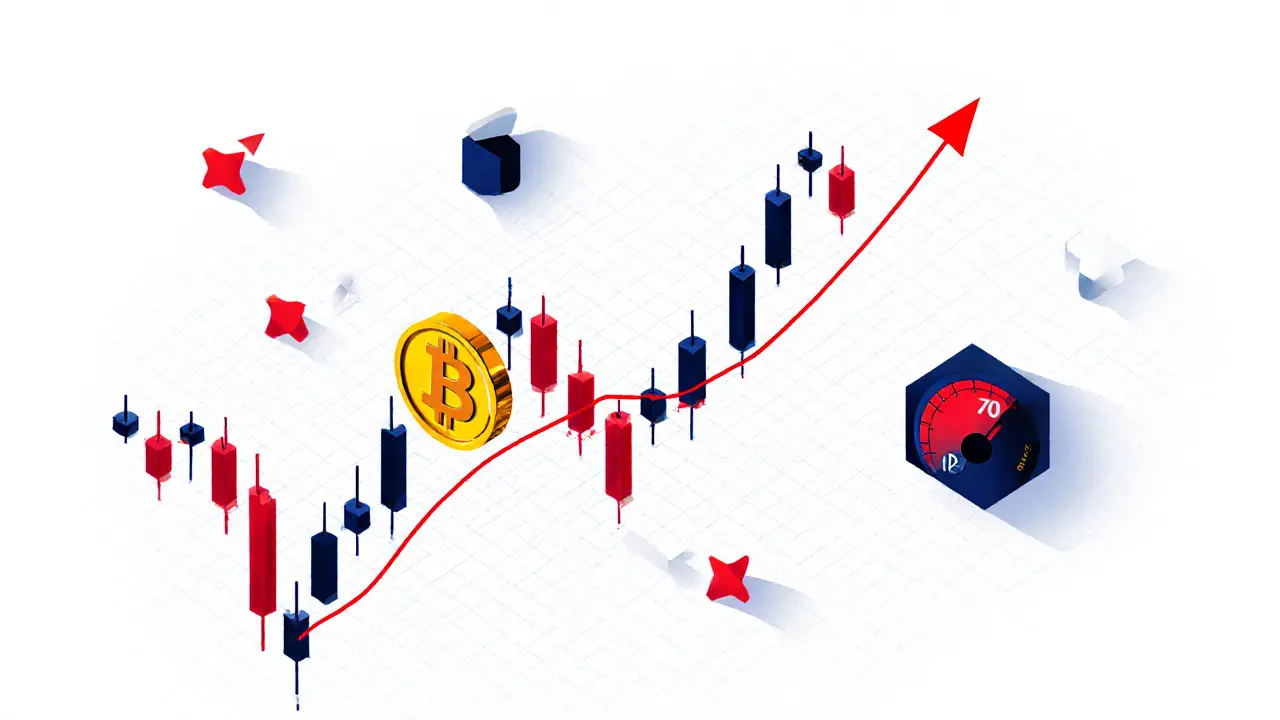Technical Analysis Crypto: Tools, Patterns, and Real Market Moves
When you look at a crypto price chart and try to guess where it’s headed next, you’re doing technical analysis crypto, the practice of using historical price and volume data to forecast future price movements. Also known as chart analysis, it’s how most active traders decide when to buy or sell — not because they believe in hype, but because they see patterns repeating. Unlike fundamental analysis, which tries to value a coin based on its team or tech, technical analysis crypto ignores all that. It only cares about what the market is actually doing — the price, the volume, the swings.
This method relies on a few core tools: candlestick patterns, visual shapes formed by price movement over time that signal buying or selling pressure, like doji, hammer, or engulfing bars. Then there are trading indicators, mathematical calculations applied to price data to reveal trends, momentum, or volatility — think RSI, MACD, and moving averages. These aren’t magic. They’re just ways to turn noise into signals. And they work best when combined with on-chain data, real-time metrics from the blockchain like wallet activity, exchange inflows, or miner behavior. For example, if a coin’s price is rising but its on-chain volume is dropping, that’s a red flag — even if the chart looks bullish.
Most people think technical analysis is about spotting perfect entry points. But in crypto, it’s more about managing risk. Look at posts like the one on RabbitX — a zero-fee exchange with 50x leverage. Traders there don’t guess. They use stop-losses based on support levels, set targets using Fibonacci retracements, and watch volume spikes to confirm breakouts. Or take the Greenhouse scam — people bought it because the chart looked like it was pumping. But without real volume or liquidity, the pattern was fake. That’s why technical analysis crypto only works when you pair it with context. A head-and-shoulders pattern on a coin with $500 in daily volume? Meaningless. The same pattern on a token trading on Binance with $100M daily volume? That’s a signal.
What you’ll find below isn’t theory. It’s real cases — from abandoned coins like Zayedcoin that looked like they were rebounding, to active DEXs like Aster where traders use technical setups to time perpetual trades. You’ll see how sentiment indicators like the Fear & Greed Index show up in price action, how false breakouts trap new traders, and why some patterns work on Solana but fail on Ethereum. No fluff. No jargon. Just what actually moves prices — and what doesn’t.
What Is Technical Analysis for Cryptocurrency? A Practical Guide for Traders
Technical analysis for cryptocurrency uses price charts and indicators to predict market movements. Learn how support/resistance, moving averages, RSI, and candlesticks help traders make decisions - and why combining them with volume and on-chain data is key.
learn more